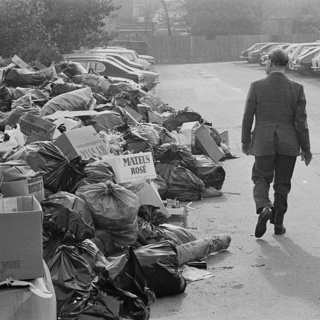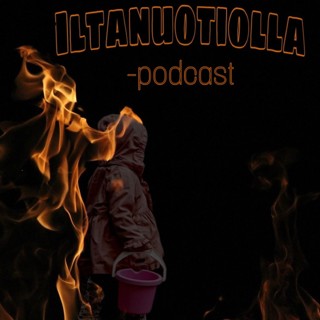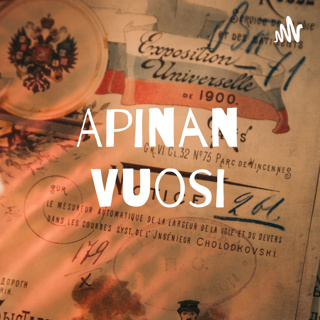
190. Man of the moment
On Easter Monday in 1916, a group of armed Irish republicans took over the main post office in Dublin and several other public buildings. They had little enough popular support, and the British authorities were able to put down the uprising quickly, using Irish troops. Then, however, the military organised a court martial for fifteen surviving leaders and executed them, including a remarkable man, James Connolly, who was so badly injured he couldn’t even stand to face the firing squad and had to be shot strapped to a chair. Those executions, followed by that of Roger Casement in August, only served to enhance the status of Sinn Fein, the Irish republican movement, wrongly believed by many to have been behind the uprising. As is not at all uncommon, brutal repression only enhanced the status of the insurgents. Asquith’s government did try to take action to improve the situation in Ireland. It sent in the man of the moment, David Lloyd George, whose performance in government was constantly strengthening his reputation as an effective politician, if not a particularly trustworthy one. He failed in Ireland, but continued to strengthen his reputation. That turned into a major problem for Asquith, whose own standing was being rapidly undermined by the perception that he was indecisive and, above all, by the disaster of the Battle of the Somme, casting doubts on his capacity to manage the war. In the end, that left him hopelessly vulnerable to attack. Lloyd George joined forces with twos Conservatives, the party leader Bonar Law, and the leader of the Ulster Protestants Edward Carson. They proved too much for Asquith to resist. Eventually, he felt forced to resign, and Lloyd George achieved the height of his ambition, by becoming Prime Minister himself. Illustration: James Connolly, Irish Republican, Socialist and Trade Unionist, put to death by firing squad by the British Army in Dublin when he was too badly injured even to stand. www.census.nationalarchives.ie/exhibition/dublin/ Music: Bach Partita #2c by J Bu licensed under an Attribution-NonCommercial-No Derivatives (aka Music Sharing) 3.0 International License.
14 Huhti 202414min

189 If at first you don't succeed, fail, fail and fail again
One of the men included in Asquith’s government in coalition with the Conservatives was the former Prime Minister, Arthur Balfour. He took over as First Lord of the Admiralty, the post Churchill was forced to vacate as a condition of the coalition forming. But Balfour had already been a member of Asquith’s War Council, the only Conservative on it. One of the major concerns of the Council was to find a way to break the stalemate of trench warfare on the Western Front. So many approaches were explored: the use of tanks, or of aircraft, or flamethrowers, or of gas. At sea, Britain imposed a blockade on trade to Germany, and Germany had a first campaign of submarine warfare against trade to Britain. The Germans interrupted it in the face of US objections, rather more strident against Germany’s subs than against Britain’s blockade – the US did well out of trade with Britain and was, in any case, rather more sympathetic to the Allies than to the Central Powers. None of the new weapons or tactics broke the stalemate. So, demonstrating a massive lack of imagination, or of capacity to learn from past mistakes, the high commands in 1916 tried mass offensives by infantry again. The only great change was the use of artillery which, with the machine gun, caused for more casualties than any other weapon in the First World War. The offensives, by the Germans at Verdun and by the Anglo-French on the Somme, again failed as all others had, gaining next to no territory and causing huge losses – over a million, across both sides, on the Somme. So 1916 ended with a lot more carnage but no progress towards peace. Illustration: Sir Douglas Haig, the man who was sure he could command the BEF better than anyone else, and presided over unbearable losses for very little gain. By Bassano Ltd, vintage print, 16 January 1917National Portrait Gallery x15159 Music: Bach Partita #2c by J Bu licensed under an Attribution-NonCommercial-No Derivatives (aka Music Sharing) 3.0 International License.
7 Huhti 202414min

188. Mounting casualties, in battle and in government
The fallout from the disastrous Gallipoli campaign together with the so-called ‘Shell crisis’, when the army began to find itself short of explosive shells for its artillery, combined to produce an increasingly toxic atmosphere for the Asquith government. Ultimately, he decided that his only way forward was in a coalition government including the Conservatives. Liberals still made up a majority of the ministers, but several leading figures had to go. One of them was Winston Churchill, made the scapegoat for the failure at Gallipoli. Britain was still not anxious to commit itself fully to the fighting on the continent. But fears about whether the French would stick it out without help on the Western Front made Britain steadily increase troop numbers there, with the results that losses mounted frighteningly in fruitless offensives. In April 1915, it was the Germans who launched an offensive, at the Second Battle of Ypres. Which was the first time gas was used in the war. By no means the last, of course, and it became a weapon much favoured by many armies, including the British. Overall, 1915 left the Central Powers ahead of the game, with more territory gained in Europe than lost in German colonies across the globe. Most notably, German-led forces drove the Russians back 300 miles, at huge cost to both sides. But these apparent successes only concealed the gradual swing in fortunes towards the Allies, as they geared up for total war, and increased recruitment into their armies. Illustration: Ruins in the Belgian town of Ypres after two years of war. Public Domain. Music: Bach Partita #2c by J Bu licensed under an Attribution-NonCommercial-No Derivatives (aka Music Sharing) 3.0 International License.
31 Maalis 202414min

187. Cockup to catastrophe
The First World War was a wonderful opportunity for cockups, seized on with glee by many military commanders or political leaders. In peacetime, such cockups do relatively little harm. In wartime they lead to deaths and injuries, and in this war, to millions of them. This episode tracks the particular series of cockups that culminated in the catastrophe that was the Gallipoli campaign, with its hundreds of thousands of casualties, to achieve precisely nothing. It follows that up with the story of one man in the campaign, and his strange turns of luck which at first sight looked like terrible misfortunes. He’s someone who’ll be back to inspire more than one episode in the future. This week also talks about the recruitment campaign that gave Britain its biggest volunteer army, and at the universality of human dumbness, exemplified not just by the British at Gallipoli but also by the Turks in the same campaign and by the Italians, like the Turks, latecomers to the feast. Quite a spectacle for you to enjoy. Illustration: ‘Your country needs you’. Kitchener’s image on the iconic recruitment poster. Public domain Music: Bach Partita #2c by J Bu licensed under an Attribution-NonCommercial-No Derivatives (aka Music Sharing) 3.0 International License.
24 Maalis 202414min

186. Never fear, the Brits are here
We’ve been talking about the start of the First World War and, in particular, about the offensives and counter-offensives between French and Germans on the Western Front. What we haven’t considered was the British contribution to the French efforts there. That, in part, is because that contribution was, initially at least, so minimal – some 90,000 men out of a total of 2 million. And for a while it wasn’t sure that even that number would go. This week’s episode looks into the dithering on the British side, on the disagreements between politicians, and indeed between generals, often wrapped up with clashing personal ambitions. The dithering continued even after the troops finally went to France, epitomised by their commander Sir John French, who couldn’t make up his mind quite how to use his men or where, and had a curious way of collaborating with his French allies, whose language he didn’t speak, while his opposite number spoke no English at all. A splendid way to go to war. By the end of 1914, the British strength had built up considerably from the numbers originally sent. The soldiers had done well, though at the cost of taking heavy casualties. And, of course, by the end of the year they wre sitting in trenches, just like the French alongside them and the Germans opposite. Illustration: German troops in a trench at Ypres. Public domain. Music: Bach Partita #2c by J Bu licensed under an Attribution-NonCommercial-No Derivatives (aka Music Sharing) 3.0 International License.
17 Maalis 202414min

185 From glory on the offensive to misery in the trenches
This episode wraps up the outbreak of the First World War and the first phase of great offences in which all sides sought glory and, above all, quick victory. Something that eluded them. We spend a little time looking at the failure of the international socialist movement, then very much in its heyday, to prevent war, even though the warmest supporters of socialism, the workers of different countries, were going to have to supply most of the soldiers put in harm’s way by the fighting. Then we move on to two other great radical movements, the Irish nationalists, who parliamentary representatives partially rallied to the British government, and the Women’s Suffrage movement, with the two main organisations taking opposed directions. The Suffragettes put the campaign for the women’s vote on the back burner and rallied support for the war effort. The majority movement of Suffragists continued to demand the vote and denounced the war for its butchery. Finally, we briefly review how the early offensives, above all in the west, led only to the appalling construction of a double line of trenches, all the way from Switzerland to the English Channel, and the start of a war of attrition. Illustration: The ‘taxis de la Marne’ that ferried French troops to the river Marne, to stop German offensive there. Music: Bach Partita #2c by J Bu licensed under an Attribution-NonCommercial-No Derivatives (aka Music Sharing) 3.0 International License.
10 Maalis 202414min

184. The instruments of violence
We’ve now reached the brink of the First World War. Before we dive in, this episode looks at how warfare had changed in the previous hundred years or so, with weapons far deadlier than had existed before, and which moved the advantage in battle from the offensive to the defensive: men with the powerful new firearms, sheltered by a good protective positions, were now well-placed to disrupt or even entirely overthrow any attempt by the other side to attack them over open ground. Next, we move on to think about how Europe looked different in 1914, with the map of central and eastern Europe dominated by three great Empires which actually touched each other – Austria-Hungary and Germany had a common border with Russia – while all the smaller states that we know today, such as the Czech Republic, Croatia, Estonia, Finland or even Poland, were simply parts of those empires. Finally, we look at how the continent spiralled downwards following the assassination of Archduke Franz Ferdinand in Sarajevo, to a general war involving the five greatest powers of the Old World, Russia, Austria-Hungary, Germany, France and Britain. Illustration: European alliances in 1914. Public Domain Music: Bach Partita #2c by J Bu licensed under an Attribution-NonCommercial-No Derivatives (aka Music Sharing) 3.0 International License.
3 Maalis 202414min

183. Spiral into worse violence
In this episode we keep following the downward spiral into violence in the years after 1910. There was the violence of the Suffragettes and the brutal treatment handed out to them in return. There was the growing threat of violence as opposing sides armed in Ireland, and some initial outbreaks of actual violence. Meanwhile, though, real violence was shaking the other end of the European continent, when war broke out in the great tinderbox, right down to the present day, of the Balkans. And not just one war but two, as the four nations that first fought Turkey (the Ottoman empire) fell out with each other over the division of the spoils. That all led to increasingly hostile relations between Serbia, one of the new independent Balkan states, and Austria Hungary, which had major Balkan holdings, including right next to Serbia. We’ve seen the regular three-yearly crises that afflicted Europe, from Tangier in 1905, to Austria-Hungary’s annexation of Bosnia in 1908, to the Agadir crisis in 1911. Now the fourth one came along, on 28 June 1914, when a Bosnian Serb assassinated the heir to the Austro-Hungarian throne, in Sarajevo, capital of Bosnia, then an Austro-Hungarian province. I think we all know what that triggered… Illustration: Aftermath of carnage: the scene of the assassination of Archduke Franz Ferdinand. Public Domain Music: Bach Partita #2c by J Bu licensed under an Attribution-NonCommercial-No Derivatives (aka Music Sharing) 3.0 International License.
25 Helmi 202414min






















